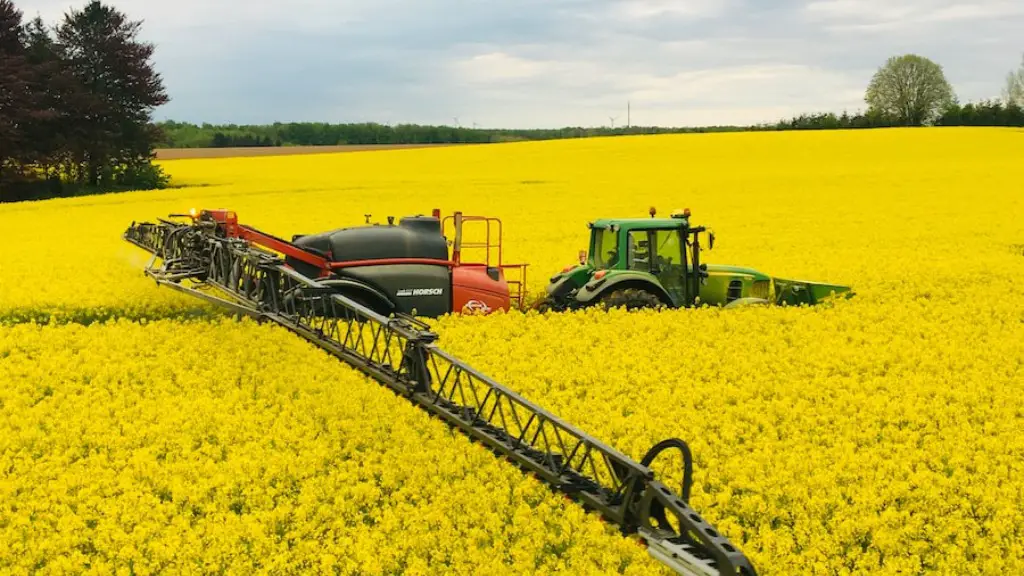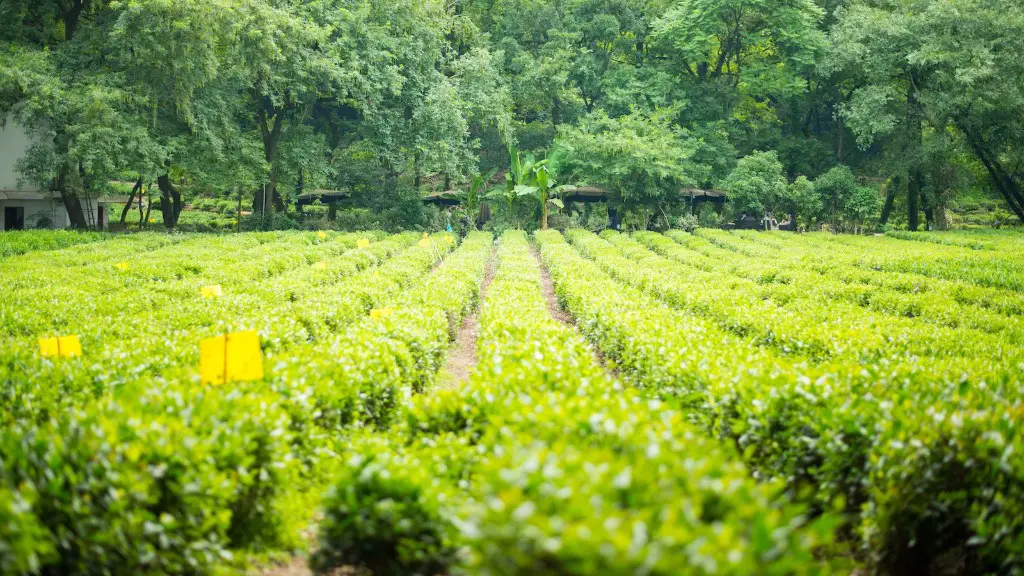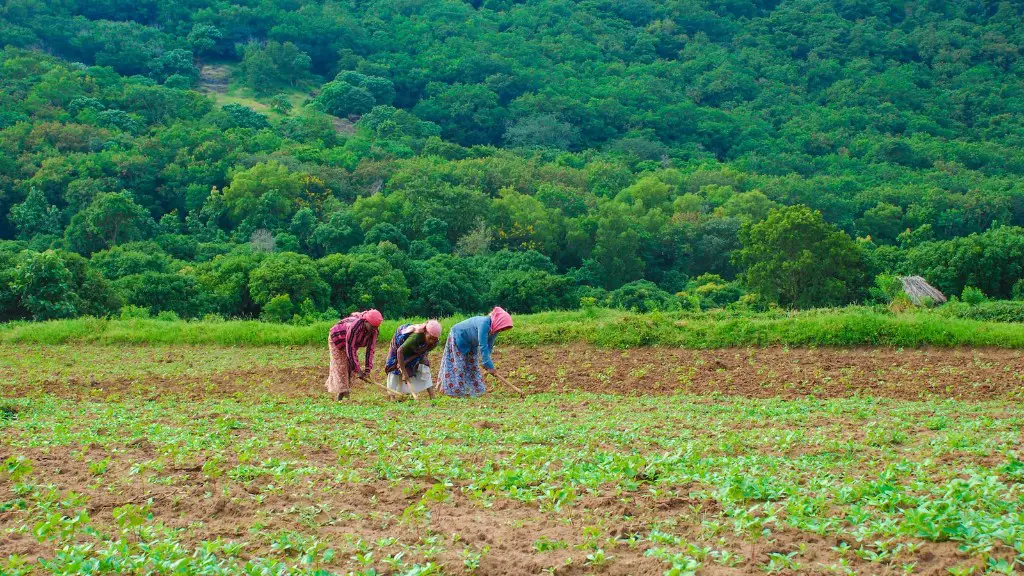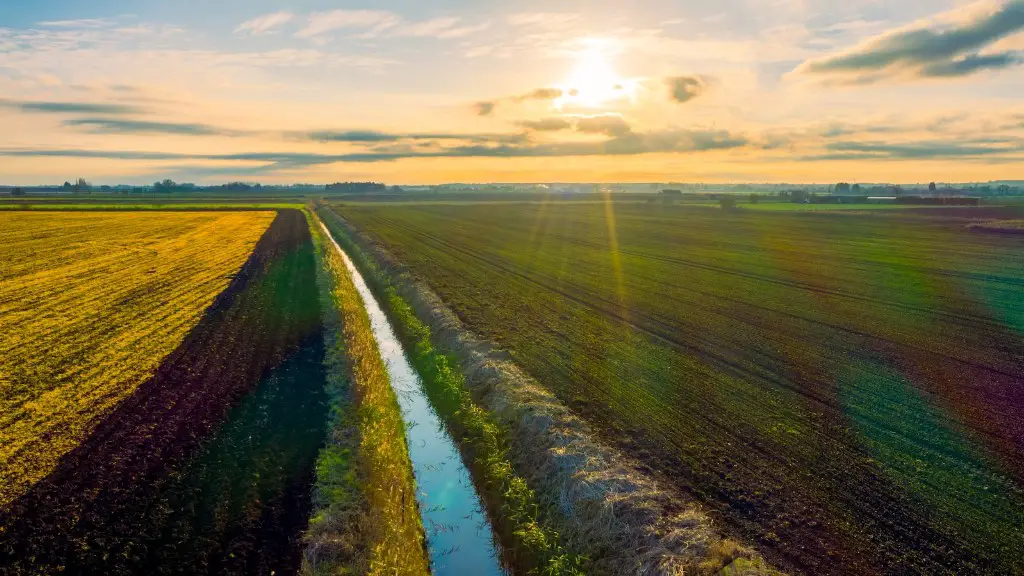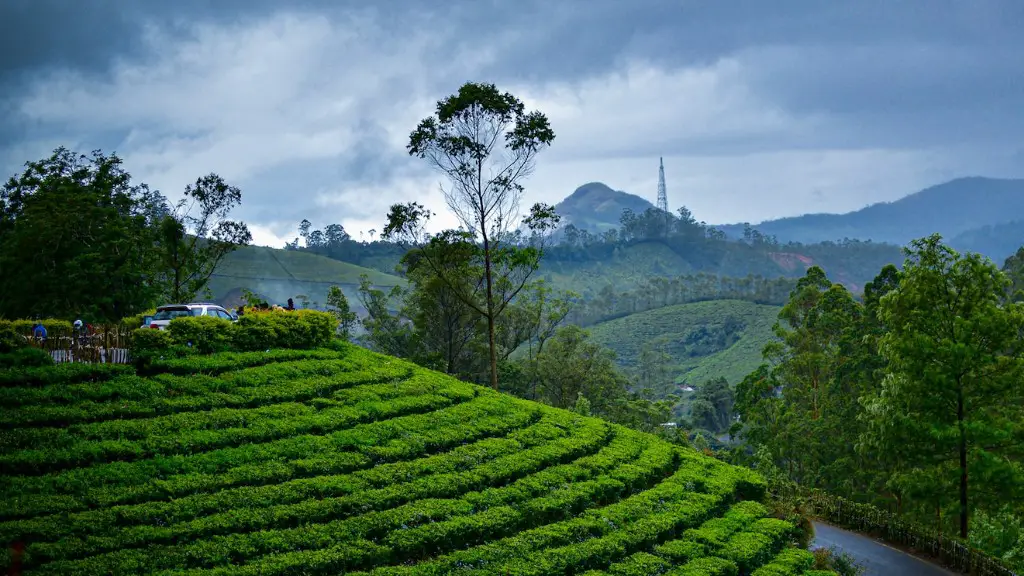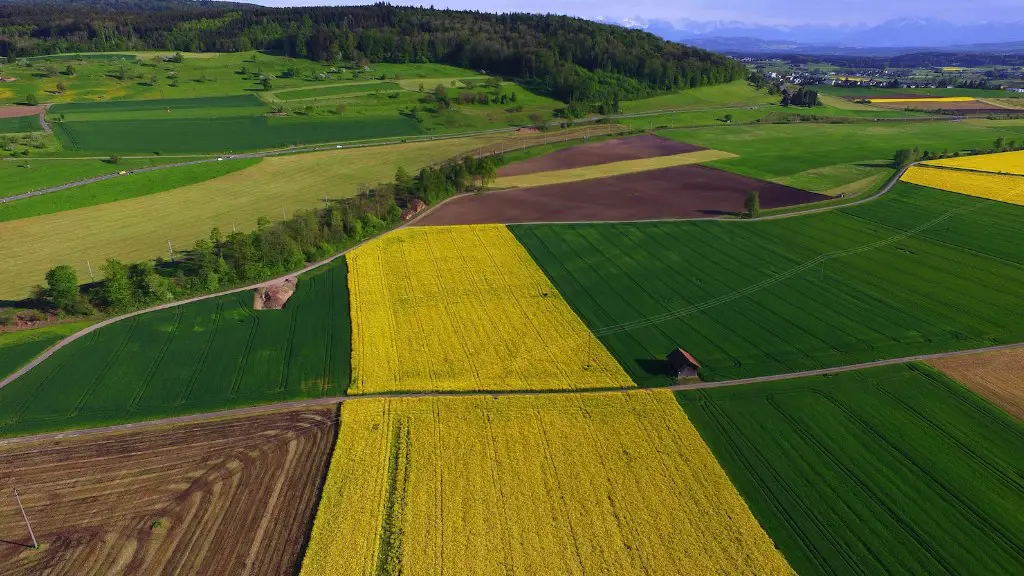The definition of sustainable agriculture according to the Food and Agriculture Organization of the United Nations (FAO) is “an ecological approach to producing food and fiber crops that maintains and enhances long-term soil productivity, safeguards the environment, and conserves natural resources.” In short, sustainable agriculture is the practice of producing food in a way that is environmentally responsible and thatdoes not deplete the soil or harm the ecosystem.
There is no one-size-fits-all answer to sustainable agriculture, as the term encompasses a wide range of practices and approaches. In general, sustainable agriculture can be defined as an approach to food production that seeks to minimize negative environmental impacts, while maximizing positive economic and social outcomes.
There are a number of different ways to achieve sustainable agriculture, and the most appropriate approach will vary depending on local conditions and resources. Some common sustainable agriculture practices include diversifying crop rotations, using cover crops and green manures, employing integrated pest management strategies, and using more efficient irrigation systems.
What are the three methods of sustainable agriculture?
There are three main types of sustainable agriculture: ecological, economic, and human health.
Ecological sustainable agriculture focuses on the health of the soil, water, and forests. It aims to reduce the impact of farming on the environment and keep the land healthy for future generations.
Economic sustainable agriculture strives to create a more stable and secure food system. It attempts to even out the playing field for farmers by providing them with a livable wage and by ensuring that consumers have access to affordable, healthy food.
Human health sustainable agriculture seeks to protect the health of both farmers and consumers. It aims to reduce the use of harmful pesticides and increase food security.
There are a few key things to keep in mind when creating a healthy environment for yourself and others. Sourcing organic food is a great way to reduce your exposure to harmful chemicals and pesticides. Reducing food waste is also important in order to create a more sustainable and environmentally friendly lifestyle. Building a relationship with your community is another way to promote a healthy environment. Finally, promoting equity for workers is important in order to create a healthy and fair working environment for all.
Which is the best sustainable agriculture technique
Crop rotation is an important sustainable agriculture technique that helps avoid the problems that can come from planting the same crops in the same soil year after year. Crop rotation can help tackle pest problems, as many pests prefer specific crops. Crop rotation can also help improve soil health by replenishing nutrients and improving soil structure.
There are many ways that we can support sustainable food production and consumption. One way is to start our own gardens and raise our own chickens for eggs. This way, we can know exactly what goes into the food we are eating and be sure that it is all organic. Another way to eat sustainably is to buy local and organic foods as much as possible. This supports local farmers and businesses and also cuts down on the emissions associated with transport. We can also close the loop by composting our food waste and using it to fertilize our gardens. Another way to support sustainable food is to eat less meat and more vegetables. Meat production is a very resource intensive process, so by eating less meat we can reduce our impact on the environment. We can also involve children in the sustainable food movement by teaching them about where their food comes from and how it is produced. Finally, we can volunteer with local sustainable farms or food justice organizations to help promote these important initiatives.
What are 5 ways we can use land sustainably?
There are a number of ways to make your agricultural operation more sustainable. One important way is to practice crop rotation and crop diversity. This means growing a variety of different crops in different areas of your land each year. This helps to keep the soil healthy and prevents the build-up of pests and diseases.
Another way to make your operation more sustainable is to use cover crops and reduced tillage or no-tillage farming practices. Cover crops help to improve soil health and reduce erosion. Reduced tillage or no-tillage farming practices help to preserve soil moisture and reduce fuel and labor costs.
Another way to make your operation more sustainable is to encourage beneficial insects and animals. Beneficial insects help to pollinate crops and control pests. Animals can provide manure for fertilizer and help to control weeds.
Finally, selling directly to the local community can also help to make your agricultural operation more sustainable. Selling directly to the local community allows you to bypass the middleman and get a higher price for your products. It also helps to build relationships with your customers and create a loyal customer base.
Crop rotation is a very effective agricultural control strategy that helps to prevent the loss of soil fertility. It involves growing a series of different types of crops in the same area in sequential seasons. The planned rotation may vary from a growing season to a few years or even longer periods. This helps to keep the soil healthy and productive.
What are 4 ways to improve the agriculture?
Agricultural productivity needs to be increased in order to meet the demands of a growing population. This can be accomplished through a variety of means, including developing high-yield crops, boosting irrigation, increasing the use of fertilizers, and improving market access, regulations, and governance. Additionally, making better use of information technology and adopting genetically modified (GM) crops can also help to improve agricultural productivity.
Sustainable agriculture is an approach to food production that seeks to minimize the negative environmental impact of farming while maximizing the positive benefits for both farmers and consumers. Elements of sustainable agriculture can include permaculture, agroforestry, mixed farming, multiple cropping, and crop rotation. By using these practices, farmers can reduce their reliance on synthetic inputs, minimize soil degradation, and improve the overall sustainability of their farms.
What are 4 sustainable practices
The term sustainability generally refers to the preservation of a particular resource. However, sustainability actually refers to four distinct areas: human, social, economic and environmental – known as the four pillars of sustainability.
The four pillars of sustainability are often used to guide sustainability initiatives and actions. By taking a holistic approach to sustainability, we can more effectively address environmental, social and economic issues.
Human sustainability refers to the ability of humans to meet their needs without compromising the ability of future generations to do the same. It includes dimensions such as health, education, social cohesion and governance.
Social sustainability includes issues such as equity, inclusiveness, social cohesion and community engagement. It encompasses the social and cultural aspects of sustainability.
Economic sustainability focuses on the creation of jobs, businesses and growth that are environmentally and socially responsible. It includes initiatives such as green business, social enterprise and responsible investment.
Environmental sustainability is about protecting and enhancing the natural environment for current and future generations. It encompasses issues such as climate change, biodiversity, water and waste management.
Sustainable agriculture is an important approach to ensuring food security for the future. It takes into account the need to protect and conserve natural resources, while ensuring that food production is sufficient to meet the needs of a growing population. This requires careful management of land, water and other resources, as well as the development of practices that are environmentally friendly and that support the health of ecosystems.
What are 10 sustainable practices?
1. Avoid disposable items: Use reusable bags when you go grocery shopping, and invest in a reusable water bottle or coffee mug.
2. Reduce your food waste: Plan your meals ahead of time so you know what you need to buy, and don’t let good food go to waste.
3. Make your own cleaning products: There are plenty of recipes online for making your own cleaning products using all-natural ingredients.
4. Grow a sustainable garden: Use organic methods to grow your own fruits, vegetables, and herbs.
5. Buy products with less packaging: Avoid single-use items and look for items that have minimal packaging.
6. Recycle properly: Make sure you know what can be recycled in your area and recycle accordingly.
7. Take meat off the menu: Consider having meat-free days or meals, and sourcing your meat from sustainable farmers.
8. Buy less, buy better: When you do need to make a purchase, choose quality items that will last longer.
9. Use energy-efficient appliances:Look for the Energy Star label when shopping for new appliances.
10. Let there be light: Use natural lighting whenever possible, and switch to
There are a number of possible solutions that can be adopted in order to improve soil health. These include adopting a soil health management system, using cover crops, diverse crop rotations with high residue crops, no-till/strip-till cropping systems, nutrient management, grazing management, and maintaining evenly spread crop residues on the surface. Additionally, well-managed animal manure and compost can also help to improve soil health.
What are the 7 types of agricultural practices
Pastoral farming is the traditional farming system in which crops are grown in rotation with livestock, typically cattle, sheep, pigs or goats. Pastoralists use the animals for draft power, milk, meat and wool, and as a source of fertilizer.
Arable farming is a form of agriculture in which fields are cultivated for the purpose of growing crops. Arable farmers typically grow crops such as wheat, barley, oats, and rye, and they also grow legumes such as peas and beans.
Mixed farming is a type of agriculture in which both crops and livestock are raised. mixed farmers typically grow crops such as wheat, barley, oats, and rye, and they also raise livestock such as cattle, sheep, pigs, and chickens.
Taungya farming is a type of agriculture in which trees are grown in rotation with crops. Taungya farmers typically grow crops such as rice, maize, and cassava, and they also grow trees such as teak and mahogany.
Fish farming is a type of agriculture in which fish are raised in ponds or tanks. Fish farmers typically raise fish such as tilapia, catfish, and carp.
Livestock farming is a type of agriculture
The above are all important factors to consider when trying to increase profitable farm income. Promoting environmental stewardship is essential to sustaining the land for future generations, while enhancing the quality of life for farm families and communities can improve morale and foster a sense of pride. Finally, increasing production for human food and fiber needs is important to support the growing population.
What are 11 ways to improve agricultural productivity?
A:
There are a number of ways to improve farming productivity. One way is to implement land reforms. This can help to improve production by increasing the density of plants, as well as by planting more crops. Raised beds can also be used to improve the productivity of farmland. Additionally, smart water management and the use of heat tolerant varieties can help to improve yields. Finally, using nitrogen can also help to improve productivity.
Higher crop productivity can have a number of benefits for the environment, including decreased use of water, fertilizer, and pesticides, which can help keep food prices down. In addition, higher crop productivity can reduce the impact of agriculture on natural ecosystems, and less runoff of chemicals into rivers and groundwater.
Warp Up
There is no one-size-fits-all answer to sustainable agriculture, as the required practices vary depending on local conditions and resources. However, there are some general principles that can be followed to promote sustainable agriculture practices, such as conserving natural resources, using input resources efficiently, and diversifying farm operations.
There are many ways to sustainably grow crops andraise animals for food. When done correctly, sustainable agriculture actually improves the quality of the environment while still meeting the needs of farmers and consumers. It is a complex topic, but one that is crucial to the future of our planet.
